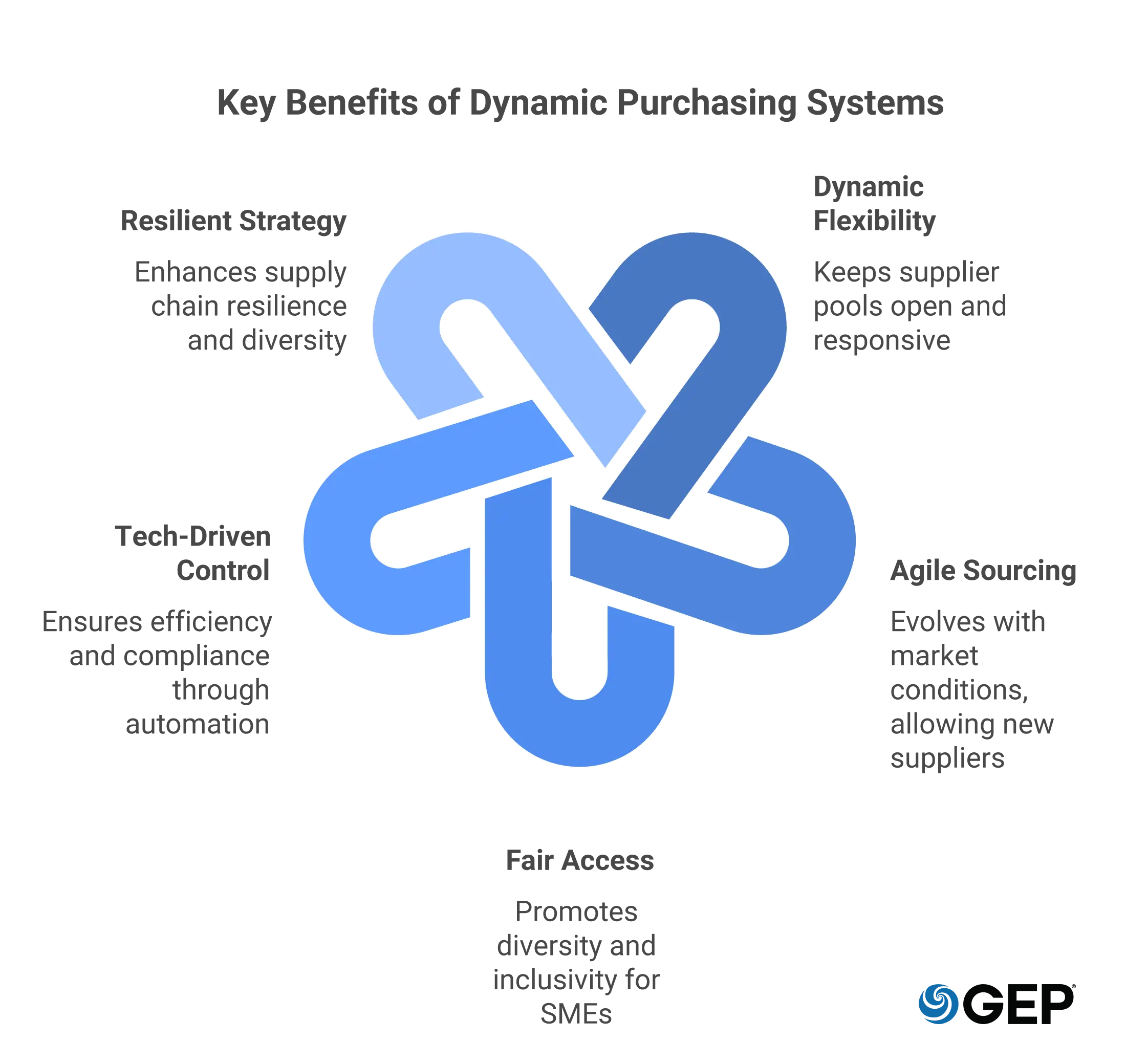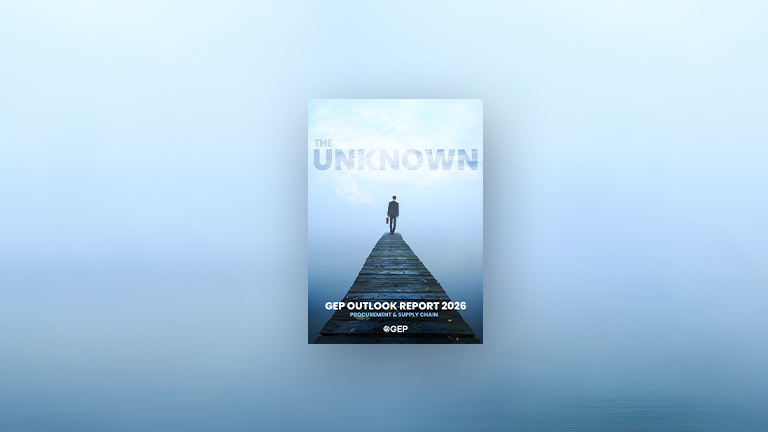
Dynamic Purchasing Systems: Flexible Sourcing for a Fast-Moving Market
- A DPS keeps your supplier pool open, flexible, and always ready to compete.
- It’s built for speed, scale, and categories that won’t sit still.
- Handled right, it gives you control without killing momentum.
September 09, 2025 | Procurement Software 4 minutes read
Procurement used to be about locking things down. Framework agreements. Multi-year contracts. Fixed pricing. Predictability ruled. But markets today don’t play by old rules. They shift fast, throw curveballs, and force sourcing teams to pivot without warning.
That’s where Dynamic Purchasing Systems (DPS) come in.
A DPS gives procurement the flexibility to evolve with the market. It doesn’t shut the door on new suppliers. It doesn’t take six months to re-tender. It’s more like a rolling invitation: if you meet the criteria, you’re in. From there, you compete in mini tenders for actual work. It’s structured, compliant, and always in motion.
Let’s break down what a DPS is, why it’s showing up on procurement radars, and when it works best.
What is a Dynamic Purchasing System?
Think of it as a live marketplace for pre-qualified suppliers.
A Dynamic Purchasing System is a fully electronic procurement process used for recurring goods and services. Unlike frameworks, which freeze the supplier list after setup, a DPS stays open. Suppliers can apply any time during its lifecycle. If they meet the criteria, they’re approved and can compete in tenders.
The process has two phases:
• Qualification
Suppliers apply to join. The buyer reviews eligibility based on set criteria. No scoring. If they meet the bar, they’re in.
• Mini-Competitions
Whenever the buyer needs something, they invite all approved suppliers to bid. Contracts are awarded on a case-by-case basis.
It’s compliant. It’s fast. And it gives you room to bring in new blood whenever needed.
Want to streamline your sourcing process and stay agile as market conditions shift?
Let’s discuss how a Dynamic Purchasing System could work across your categories.
Why Procurement Leaders Are Paying Attention
Markets don’t stand still. Neither can procurement.
A DPS lets you run tenders on a rolling basis. That means faster access to suppliers, quicker contract awards, and a live pool that updates as the market does. It’s an ideal tool when you need responsiveness without giving up control.
It also solves a long-standing issue in public procurement: access. SMEs often miss out on frameworks because they aren’t ready when the door opens. With a DPS, they can apply when they’re ready — and still get a fair shot.
Bottom line: A DPS lets you match speed with compliance, and growth with governance.
DPS vs Framework Agreements: Not Just Semantics
Let’s clear this up. A DPS is not just a looser version of a framework. The differences go deeper:
Feature | Framework Agreement | Dynamic Purchasing System (DPS) |
|---|---|---|
| Supplier Access | Closed after setup | Open throughout |
| Duration | Up to 4 years (typically) | Often 2 to 4 years |
| Bidding | Fixed list of suppliers | Open pool, dynamic mini-tenders |
| Good for | Stable categories | Fast-moving, repeatable needs |
| Supplier Turnover | Low | High (new entrants anytime) |
Frameworks are great for categories that don’t change much. But if the market evolves quickly, or if supplier innovation is key, DPS wins. It’s simply more fluid.
Where DPS Works Best
You don’t roll out a DPS for everything. The real value lies in categories that are:
- Frequently purchased
- Low-to-medium complexity
- Prone to local variation or change
- Competitive (lots of suppliers)
Ideal categories include:
- Transport services
- Cleaning contracts
- Printing and scanning
- Catering and hospitality
- Digital or IT services
- Temporary staffing
Need something ten times a year, with short turnaround and multiple vendors? That’s DPS territory.
It also shines when you need to manage national procurement from the ground up. Local teams can run mini-competitions, while head office keeps overall visibility.
What You Need to Run a DPS Well
This isn’t a plug-and-play setup. A DPS runs on solid foundations.
Here’s what you’ll need:
• Automation
Manual onboarding will kill it. You need a platform that handles supplier registration, document checks, and bid submissions.
• Clarity
Your entry criteria should be objective and non-discriminatory. That’s not just good practice — it’s a legal requirement.
• Engagement
Suppliers need to know the DPS exists. Market it well, or you’ll end up with an empty pool.
• Oversight
You’re not just letting the process run on its own. Procurement teams still need to review mini-competitions, resolve issues, and report performance.
Done right, a DPS keeps your vendor base current and your contracts flowing — without red tape.
Ready to put agentic AI to work in your procurement function?
Download The Agentic AI Playbook for Procurement Pros to see how leading organisations are moving from automation to true autonomy.
Bigger Picture: How DPS Supports Procurement Strategy
A DPS doesn’t just solve for speed. It supports broader procurement goals too:
• Supplier Diversity
Because the system stays open, it’s easier to bring in new entrants, SMEs, and underrepresented vendors.
• Scalability
Once the foundation is in place, you can run more sourcing events without burning out your team.
• Resilience
Supply chain shocks don’t force you back to square one. You can respond fast by adding suppliers on the fly.
• Governance
You get clear records of who bid, who won, and why. That’s audit-friendly and legally robust.
And it keeps your sourcing ecosystem alive. You don’t get stuck with suppliers from four years ago just because your hands are tied.
Also Read: Why Getting Supplier Diversity Right is Vital for Your Procurement
Smarter Sourcing for a Moving Market
You can’t predict where the market’s going. But you can build a procurement function that’s ready for anything.
A Dynamic Purchasing System gives you that readiness. It meets the needs of now, without locking you into a supplier list from the past. It supports fast decisions, competitive bidding, and fair access — all while staying compliant.
If your category mix is high-volume and ever-changing, don’t default to a framework. Think dynamic. Pilot a DPS. Monitor the results. You’ll likely wonder why you didn’t try it sooner.




